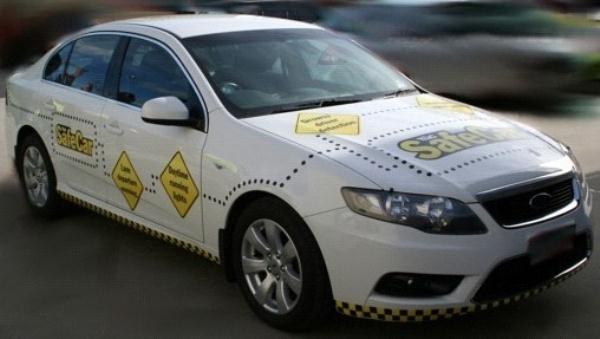By BEN CAMERON
The TAC is trialling new seatbelt interlock technology in SafeCar that takes existing seatbelt reminder systems one step further and prevents the driver from starting the car unless occupants are buckled up.
The TAC SafeCar project is a demonstration project of new and emerging technologies that have promising road safety potential.
Encouraging the uptake of new vehicle safety technologies is a key goal of the state government’s Road Safety Strategy. For more information on the strategy, visit www.roadsafety.vic.gov.au.
The technologies selected demonstrate and promote these technologies to the community and key decision-makers.
The technologies currently installed in the TAC SafeCar include:
Intelligent Speed Assist (ISA) – ISA is a safety technology that alerts drivers when they exceed the speed limit. ISA activates when a driver exceeds the posted speed limit for a section of road by a predetermined limit (eg 2km/h or more).
Audio and visual warnings sound to remind the driver that they are going too fast.
Lane Departure Warning – uses a camera mounted inside the vehicle windscreen to scan the road for lane markings and give the system an indication of where the vehicle is positioned on the road.
Visual, audible and haptic warnings (eg. vibration of steering wheel) are given to the driver when they begin to move outside of the lane if the indicator is not used.
Driver Drowsiness Detection – DDD utilises a driver’s steering input to determine their level of drowsiness. A visual and/or audible alert is delivered to the driver when drowsiness is detected.
Seatbelt Interlock – the seatbelt interlock is a technology that takes the existing seatbelt reminder systemsone step further and prevents the driver from starting up the car, unless seatbelts are worn.
The technology in SafeCar is active for the driver and front passenger seats.
Top Speed Limiting – the TAC SafeCar is top speed limited to 120km/h and has a reconfigured speedometer to reflect the new top speed.
Daytime Running Lights – Daytime Running Lights (DRLs) are headlights that are illuminated during the day in order to make vehicles more visible and thus reduce their involvement in crashes. It is possible to fit vehicles with a device that will automatically activate DRLs when the ignition is switched on but is overridden by full-strength headlights. DRLs have been found to increase driver’s peripheral perception of vehicles. It is also easier for drivers to estimate the distance to vehicles with DRLs.







